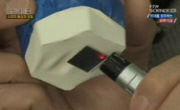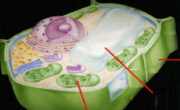This article analyzes the properties and durability of young speakers’ words contained in 『The Encyclopedia of contemporary words』 from a perspective of neologism, jargons, young speakers’ words, and fashionable words. As a result, the study d...
http://chineseinput.net/에서 pinyin(병음)방식으로 중국어를 변환할 수 있습니다.
변환된 중국어를 복사하여 사용하시면 됩니다.
- 中文 을 입력하시려면 zhongwen을 입력하시고 space를누르시면됩니다.
- 北京 을 입력하시려면 beijing을 입력하시고 space를 누르시면 됩니다.
https://www.riss.kr/link?id=A60232126
- 저자
- 발행기관
- 학술지명
- 권호사항
-
발행연도
2012
-
작성언어
Japanese
-
주제어
약자어 ; 특징 ; 지속년수 ; 신어 ; 류행어 ; language of young speakers ; property ; durability ; neologism、fashionable word ; 若者語 ; 特徴 ; 持続年数 ; 新語 ; 流行語
-
등재정보
KCI등재
-
자료형태
학술저널
-
수록면
141-156(16쪽)
- DOI식별코드
- 제공처
-
0
상세조회 -
0
다운로드
부가정보
다국어 초록 (Multilingual Abstract)
This article analyzes the properties and durability of young speakers’ words contained in 『The Encyclopedia of contemporary words』 from a perspective of neologism, jargons, young speakers’ words, and fashionable words. As a result, the study discovers the following 4 characteristics. 1. Vowel variations of young speakers’ words: words concerning 「mood and oral habit」most frequently emerge in their use, since this tendency is due to the characteristics that speakers of young generation have strong concerns of themselves and mental complexity. 2. The aggregate of the total years from a perspective of young speakers’ words as a subject of analysis: young speakers’ words of 2009 are predominant in use, but the frequency of emergence of each year does not show a big difference from a viewpoint of the comparison for 5 years. 3. The analysis on each part from a perspective of young speakers’ words as a subject of analysis: the most frequent part is related to「mood and oral habit」, those words of which denotes evaluation of people or negative connotation in most cases. 4. Durability of young speakers’ words: words associated with「activity」have the longest durability and words related to 「fashion」 and 「personal relationship and daily life」do not last that long. Furthermore, calculating the total years of durability of the words, it is confirmed the fact that the durability of 2.4 years is longer than 1.5 years of the precedent study by Yonekawa Akihiko
목차 (Table of Contents)
- 1. はじめに
- 2. 若者語の定義
- 3. 先行硏究
- 4. 分析對象と硏究方法
- 4.1 分析對象
- 1. はじめに
- 2. 若者語の定義
- 3. 先行硏究
- 4. 分析對象と硏究方法
- 4.1 分析對象
- 4.2 硏究方法
- 5. 分析結果及び考察
- 5.1 分析結果
- 5.2 考察
- 5.2.1 異なり語類から見た全體的特徵
- 5.2.2 延べ語類から見た年度別部門別特徵
- 5.2.3 持續年數
- 6. おわりに
- 【參考文獻】
- <要旨>
동일학술지(권/호) 다른 논문
-
「~たばかり」と「~たところ」の時間語との共起関係 ー青空文庫を中心にー
- 한국일본근대학회
- 長原成功
- 2012
- KCI등재
-
- 한국일본근대학회
- 金秀榮
- 2012
- KCI등재
-
- 한국일본근대학회
- 朴墉一
- 2012
- KCI등재
-
- 한국일본근대학회
- 元根朋美
- 2012
- KCI등재





 KCI
KCI eArticle
eArticle





